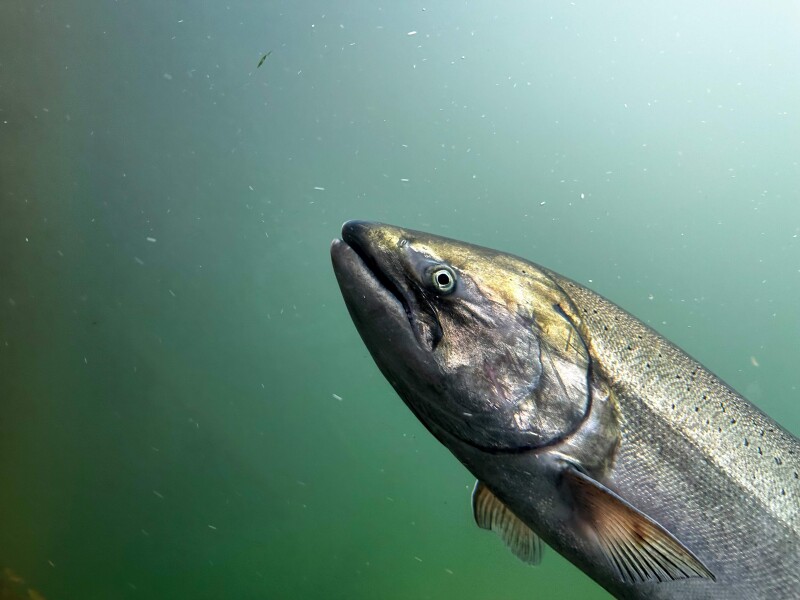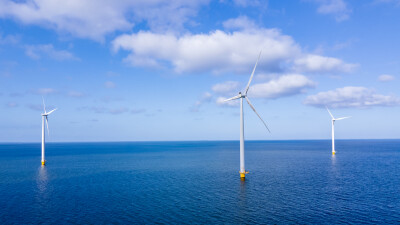Salmon fisheries rimming the entire Gulf of Alaska moved one step closer to the chopping block following an NMFS finding that agrees with the science of a Pacific Northwest conservation group and its assertions that listing chinook stocks under the Endangered Species Act could be the best approach to preserving the runs.
At the same time, Alaska realizes dismal returns of chinooks to major river systems statewide, the listing could severely curb fisheries directed toward Alaska’s other four species: sockeyes, chums, cohos, and pinks. This would be an endangering blow to the commercial fishing industry.
In regimes to protect weaker stocks such as the chinooks, which return en masse with other species, the listing could force managers to close fisheries directed for the harvest of lucrative sockeyes and plentiful pinks at Kodiak, Cook Inlet, the Alaska Peninsula, and Prince William Sound.
The fight among the Wild Fish Conservancy (WFC), NOAA, the State of Alaska, and the commercial fishing industry began a few years ago in a court argument that NMFS, in its biological opinion, did not consider a portion of the commingling salmon stocks as forage fish for killer whales as part of the Pacific Salmon Treaty. That omission, the group contends, puts the agency out of compliance with the Endangered Species Act. Since then, a pod of 74 killer whales native to Puget Sound has been deemed endangered. A WFC analysis provided to the court alleged that trollers foregoing their seasons would provide enough surplus chinooks to thwart the declining population of killer whales.
While judges in lower courts ruled in favor of shutting down the Southeast troll fishery to preserve treaty-caught chinooks and NMFS struggled to amend language that could bring the management plan in compliance with the act, the Ninth Circuit Court of Appeals overrode the earlier court decisions, granted trollers a stay, and allowed them to fish.
On January 11, WFC pivoted from its fight in the courts and petitioned for the listing under federal mandates with NMFS. After a 90-day review ending in May, NMFS found evidence that the chinooks could benefit from protection under the act.
“We have reviewed the petition, the literature cited in the petition, and other literature and information available in our files prior to receipt of the petition,” says a statement released from NMFS on May 23. “We found that the information present in the petition contained numerous factual errors, omissions, incomplete references, and unsupported assertions and conclusions. Still, we considered missed escapement goals in recent years for many stocks in the petitioned area and evidence of decreasing size and age at maturity. We concluded that the petition contained enough information for a reasonable person to conclude that the petitioned action may be warranted.”
In the same report NMFS expressed accolades toward the Alaska Department of Fish and Game for its expertise in the next steps of determining whether or not the chinooks should be listed. The steps prescribed for the next year include gathering more data from specific chinook drainages and conducting habitat studies and other biological sampling.
Flattery aside, the NMFS conclusion chagrined ADF&G Commissioner Doug Vincent-Lang, as indicated in his written response. "The petition was clearly drafted by people with little knowledge of Alaska and Alaska salmon stocks. It was rife with significant factual errors, omits important data that are widely available, and does not accurately describe the status of chinook salmon in Alaska. It is mind boggling that NMFS could make a positive finding based on cherry-picked data to support a pre-determined viewpoint.”
The federal finding comes as a latest blow to ADF&G whose hard-fought battle to manage the state’s salmon fisheries stems back to statehood in 1959. Recent court cases pitting ADF&G against NMFS in Cook Inlet and on the Kuskokwim River threaten the state’s control in managing its own fisheries.
Chinook escapement numbers to Alaska streams in 2024, meanwhile, have been abysmal. On the Kenai River, the early run escapement goal ranges from 3,900 to 6,600, but only 271 chinooks had crossed the sonar as of June 9. Escapement goals for the Anchor River have been set at a range from 3,200 to 6,400 chinooks, but 518 have been counted in the same period. On the Deshka River, only 57 fish of an escapement range of 9,000 to 18,000 fish had been counted. And the patterns run similar among other notable chinook-producing drainages throughout south-central Alaska.
"Simply failing to meet an escapement goal that is calculated to meet maximum sustained yield does not mean a stock is at risk of extinction,” wrote Vincent-Lang in his rebuttal to the NMFS report.
He’s not alone in thoughts that an ESA listing would do little to build runs to their recent historical pasts.
“The state and federal managers have gotten themselves in an awkward mess concerning Chinook,” says Roland Maw, a director of the United Cook Inlet Drift Association in Soldotna. “These stocks in the last 15 to 20 years have displayed slower growth rates resulting in smaller (lengths and weights) at a particular age.”
Maw adds that an emphasis on counting fish 32 to 34 inches in length (ages 3, 4, and 5) that return to the Kenai River doesn’t take into consideration the number of smaller fish that return each year.
“It is highly probable that, in the Kenai, the spawning escapement goals are being achieved and possibly exceeded when all age classes of chinook are enumerated.”
If studies determine that one or more chinook populations are worthy of listing as threatened or endangered, NMFS will publish a proposed rule in the federal register. After that, it will await public comment for another year before a final rule would become law.
In the meantime, Vincent-Lang and ADF&G intend to cooperate in delivering data and its expertise.
“The State of Alaska will work with the NMFS to the extent allowable to ensure they have the best available information to inform their review and to demonstrate that Alaska's wild Chinook salmon stocks are not at risk of extinction now or in the foreseeable future,” he says.







